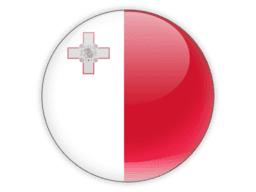
Regions of Malta
Explore 50 regions
Cities of Malta
Discover 50 cities across 38 regions
Attard(1)
Balzan(1)
Birkirkara(1)
Birżebbuġa(1)
Bormla(1)
Dingli(1)
Għajnsielem(1)
Ħal Għargħur(1)
Ħal Għaxaq(1)
Ħaż-Żabbar(1)
Ħaż-Żebbuġ(1)
Il-Fgura(1)
Il-Gudja(1)
Il-Gżira(1)
Il-Ħamrun(1)
Il-Kalkara(1)
Il-Marsa(1)
Il-Mellieħa(1)
Il-Mosta(1)
Il-Qrendi(1)
In-Nadur(1)
In-Naxxar(1)
Ir-Rabat(1)
Is-Siġġiewi(1)
Is-Swieqi(1)
Ix-Xagħra(1)
Ix-Xewkija(1)
Iż-Żejtun(1)
Iż-Żurrieq(1)
Lija(1)
L-Iklin(1)
L-Imġarr(1)
L-Imqabba(1)
L-Imsida(1)
Luqa(1)
Marsaskala(1)
Marsaxlokk(1)
Paola(1)
Malta is a small island country located in the central Mediterranean Sea, south of Italy and north of Libya. The country consists of three inhabited islands: Malta, Gozo, and Comino, and several uninhabited ones.
Malta has a rich history, dating back to over 7000 years ago, with influences from the Phoenicians, Romans, Arabs, Normans, Knights of St. John, French, and British. As a result, the country is home to numerous historical and cultural attractions, including ancient temples, fortresses, and museums.
The official languages of Malta are Maltese and English, and the country's population is around 500,000 people. The majority of the population is Roman Catholic, and the country has a strong religious tradition and a large number of churches and chapels.
Malta's economy is driven by the services sector, particularly tourism, which is a major source of income for the country. Malta is known for its beautiful beaches, crystal-clear waters, and warm climate, making it a popular destination for sun-seekers. The country is also home to a vibrant nightlife scene, with numerous bars, clubs, and restaurants.
Other popular tourist attractions in Malta include the capital city of Valletta, the ancient walled city of Mdina, and the Blue Lagoon on the island of Comino. The country is also famous for its traditional festivals, including Carnival and the Feast of St. Paul's Shipwreck.
Malta uses the Euro as its currency and has a well-developed public transportation system, including buses and ferries. The country also has a high standard of living and a strong healthcare system.
Telephone Code
356
Local Emergency Phone
112
Vaccinations
An International Certificate of Vaccination for yellow fever is required for travelers arriving from countries with a risk of yellow fever transmission and for travelers having transited through the airport of a country with risk of yellow fever transmission. See WHO recommendations.
Climate
Mediterranean; mild, rainy winters; hot, dry summers
Currency (Code)
Euros (EUR)
Electricity/Voltage/Plug Type(s)
230 V / 50 Hz / plug types(s): G
Major Languages
Maltese, English
Major Religions
Roman Catholic more than 90%
Potable Water
Yes, but some opt for bottled water
International Driving Permit
Suggested
Road Driving Side
Left
Tourist Destinations
Valletta (includes Saint John’s Co-Cathedral, Church of Saint Paul’s Shipwreck); Island of Gozo; towns of Mdina and Rabat; Megalithic Temples of Malta (includes Tarxien Temples); Saint Julian's Harbor; Island of Comino (includes Blue Lagoon)
Major Sports
Soccer, rugby, motorsports, watersports
Cultural Practices
Among new acquaintances, it is very common to refer to someone by their title and surname. First name use is typically reserved until greater familiarity is attained.
Tipping Guidelines
It is customary to tip between 5-10% at restaurants. However, if a service charge is already included, then a tip is not necessary. Tip porters/bellhops 1-2 euros per bag. A small tip for housekeeping is also greatly appreciated and should be about 2-3 euros per day.
Souvenirs
Religious icons/statues and prayer beads, gold and silver jewelry and filigree work, blown glass, hand woven lace, pottery
Traditional Cuisine
Stuffat tal-fenek (Maltese rabbit stew) — a slow-cooked rabbit dish; typically the tomato-based sauce is served with pasta as a first course and the rabbit with vegetables is served as a main course
Geography
Area
total: 316 sq km
land: 316 sq km
water: 0 sq km
Climate
Mediterranean; mild, rainy winters; hot, dry summers
Natural resources
limestone, salt, arable land
People and Society
Population
467,138 (2023 est.)
Ethnic groups
Maltese (descendants of ancient Carthaginians and Phoenicians with strong elements of Italian and other Mediterranean stock)
Languages
Maltese (official) 90.1%, English (official) 6%, multilingual 3%, other 0.9% (2005 est.)
Religions
Roman Catholic (official) more than 90% (2006 est.)
Population growth rate
0.59% (2023 est.)
Government
Government type
parliamentary republic
Capital
name: Valletta
Economy
Economic overview
high-income, EU-member European economy; diversified portfolio; euro user; dependent on food and energy imports; strong tourism, trade, and manufacturing sectors; high North African immigration; large welfare system; educated workforce
Real GDP (purchasing power parity)
$23.157 billion (2021 est.)
Real GDP per capita
$44,700 (2021 est.)
Agricultural products
milk, tomatoes, potatoes, onions, cauliflowers, broccoli, eggplants, pork, cabbages, poultry
Industries
tourism, electronics, ship building and repair, construction, food and beverages, pharmaceuticals, footwear, clothing, tobacco, aviation services, financial services, information technology services
Exports
$22.11 billion (2021 est.)
Exports - partners
Germany 12%, France 9%, Italy 9% (2019)
Exports - commodities
integrated circuits, refined petroleum, packaged medicines, children's toys and stuffed animals, postage stamps (2019)
Imports
$21.362 billion (2021 est.)
Imports - partners
Russia 22%, Italy 12%, United Kingdom 11%, Germany 6%, Turkey 5%, France 5%, China 5%, South Korea 5% (2019)
Imports - commodities
refined petroleum, recreational boats, ships, aircraft, coal tar oil (2019)
International Airports in Malta
Discover 1 major airports serving Malta
Mark Malta as Visited
Add Malta to your personal travel map and track your journey around the world. Share your adventures and see your progress grow!